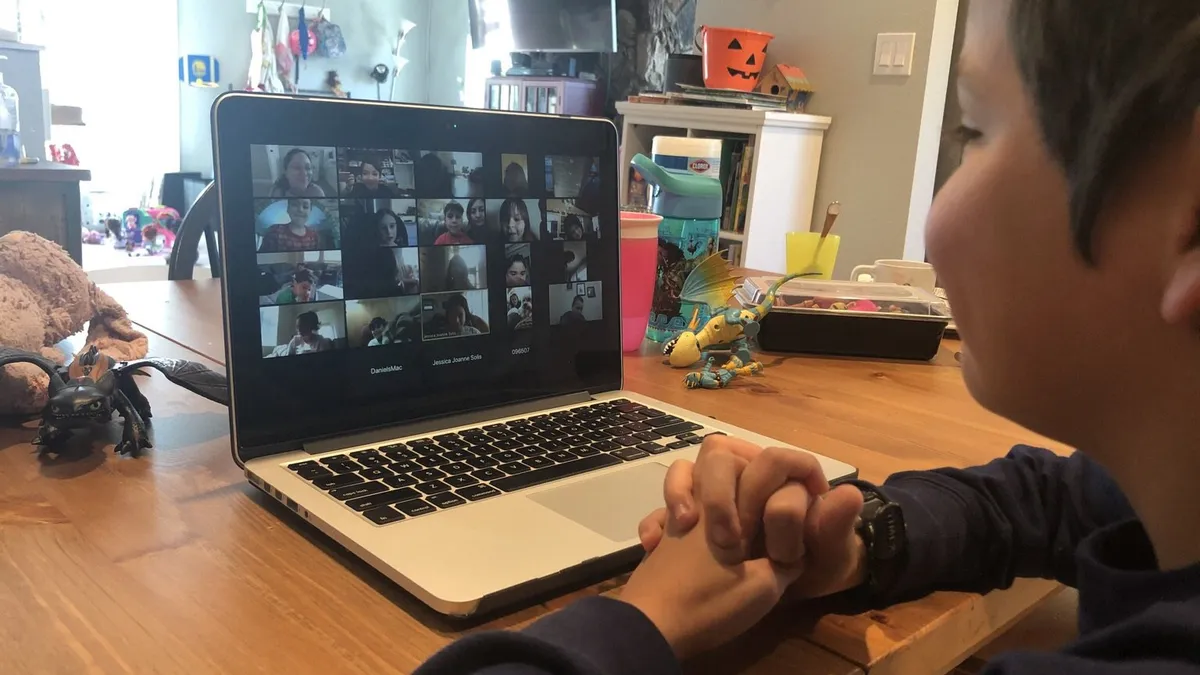Dive Brief:
- As online lessons during spring and summer school sessions disrupted by the coronavirus pandemic have shown, engaging with students in this format can be challenging, Chalkbeat reports, noting up to 20% of New York City teachers may be teaching from home next fall.
- A national poll indicates 42% of parents value live online classes, but only 26% say their children had them. In some cases, its difficult for students to get connected due to lack of technology or reliable internet, and some students aren’t comfortable with their cameras constantly on.
- Teachers have found live classes with small groups can be more engaging than large, all-class sessions. In small groups, students tend to interact more than they would in a large group.
Dive Insight:
Even for live sessions, it's important to record the class so students can benefit from asynchronous learning.
When school begins in the fall, many states are preparing in-class teaching, online learning and hybrid approaches featuring some combination of the two on alternating schedules. The sudden transition to distance learning in the spring revealed some best practices, and a mix of professional development and trial-and-error have left teachers better prepared to adapt to disruption than in spring.
Greenville County Schools in South Carolina was among districts able to reposition pre-existing device programs to transition to distance learning relatively smoothly, developing an e-learning template for teachers that included guidance on virtual classes as well as packets for K-2 students. After two weeks of adjustment, teachers were reportedly designing their own lessons.
There, teachers can personalize learning for each student through software programs. Google Meet, phones and other modes of communication are used to connect with students. The district also launched workshops on Google Classroom and Google Meet, in addition to holding sessions on how to design e-learning content.
Online curriculum sites like Share My Lesson also offer distance learning ideas from and for teachers as they design their lessons. For example, one elementary teacher writes that they call each student via Zoom daily or every other day to check in and give them positive reinforcement. Many teachers are incorporating social-emotional lessons about how to deal with anxiety and worry.
Google Docs can also allow older students to work together editing each other’s writing. But in the early grades, one kindergarten teacher has her students use pencil and paper rather than technology. Parents take photos of the finished assignments and send them back to the teacher. Similarly, in a subject like math, for example, a teacher might have students send photos of problems they're struggling with through Remind before sending solutions back to the students.
Juli Ruff, a 9th grade humanities teacher in San Diego, tried to give her students as much routine as possible with daily assignments and deadlines. She also embraced a project-based approach while choosing things students could do at home, such as a baking blog or soccer instructional videos.







 Dive Awards
Dive Awards




